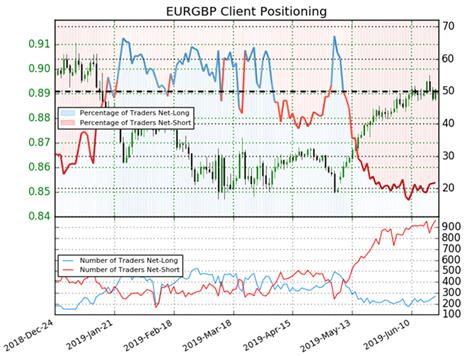Contents
They’ll connect two relevant price points, such as a high and a low, and the indicator provides horizontal lines — Fibonacci retracement levels. Fibonacci extension levels are not used as much as retracements, but they are still worth examining. As opposed to Fibonacci retracement levels, which are spread between the swing low and swing high, Fibonacci extension levels reach past the swing high or swing low. The retracement levels are spread between the 1 and the 0 (the levels are 0.236, 0.382, 0.5, 0.618 and 0.786).
For instance, say a trader notices a contract start to move higher. Then, it retraces to 38.2% Fibonacci level and starts to move higher again. Because that retracement occurred at a Fibonacci level the trader has a good idea where the price is going to move after retracement and then may decide to purchase the contract.

They’re extremely useful to use when setting your take profit or trying to determine how far a bounce may go. In the example trade, the stop was placed in between the 50% and 61.8% fib line. For this trade, it just made sense because if it would have broken the 50% fib line, then the uptrend would have been invalidated. We want to get out of that BUY trade as quickly as possible. This shows us what our charts will look like before we make a trade. Let’s go ahead and look at all we will need with this trading strategy.
Great Trading Strategy
Keeping that in mind, below we show you two methods to use the Fibonacci retracement tool in order to effectively place stop-loss orders. StocksToTrade in no way warrants the solvency, financial condition, or investment advisability ofany of the securities mentioned in communications or websites. In addition,StocksToTrade quantitative trading: how to build your own algorithmic trading business (wiley trading) accepts no liability whatsoever for any direct or consequential loss arising from any useof this information. The stocks I’m watching in November aren’t outliers … The market has been in recovery mode since mid-October…. It’s important to be aware of what’s actually happening with a stock’s price and react wisely.
Great info to know, will try to apply things from here to future trades. 2.272 is just one of these numbers in a sequence that price has reacted at before, so there is a likelihood that it reacts again in the future. As a retail trader, you can therefore prevent yourself from swimming against the tide by surfing the momentum they provide. HIVE ticks the boxes of being a fundamentally strong cryptocurrency whose price is being influenced by unrelated factors. Without any sort of supporting fundamental analysis to say what you’re buying is actually undervalued, what you’re likely doing is simply buying a dud.
In both scenarios, it is useful to wait for a candlestick pattern to confirm that the price is bouncing at the resistance spot or pushing through the support level. This helpful tactic has a high rate of ensuring a decent entry at the right time. Fibonacci time ratios explain how long a swing high swing low might take in time before the next swing high swing low starts. It does that by measuring a completed swing high swing low and then placing 38.2%, 61.8%, 100% of the time length forward. The next swing high swing low has a higher chance of finishing at these Fib levels.
Let’s do a quick refresher on swings to make sure you’re identifying them properly. Excellence strategy, i will follow it since i am very interested both trendline and fibos. So at this point, you have two trades on, both in profit. The only reason to wait for a candle to close above the 38.3% fib line is because it is in between the 38.2%-50% lines for this example.
Each of these levels represents potential support on the chart. Fibonacci levels can be utilized to identify support and resistance zones on a trading chart. The sequence has numerous applications in many fields of science.
The foreign exchange market and derivatives such as CFDs , Non-Deliverable Bitcoin Settled Products and Short-Term Bitcoin Settled Contracts involve a high degree of risk. They rhinophobia require a good level of financial knowledge and experience. Fibonacci’s are placed at swing highs or swing lows to determine where dynamic support or resistance may appear.
Look for Trend Changes
In a SELL-In order to make your entry, you will wait for the price to close below either the 38.2% or 50% line. In a BUY-In order to make your entry, you will wait for the price to close above either the 38.2% or 50% line. The price retraced all the way back and tested the 38.2 mark for quite a while before hitting the trend line and continuing to go to the upside. This happens every single day, which is why it is critical to have a strategy that will help you know if this break may occur. With that being said let’s look at our chart and see what happened. This rule is the critical step to the strategy so you need to pay close attention.

From there, prices should retrace the initial difference by a ratio of the Fibonacci sequence, generally the 23.6%, 38.2%, 50%, 61.8%, or the 76.4% retracement. The logic most often used by Fibonacci based traders is that since Fibonacci numbers occur in nature and the stock, futures, and currency markets are creations of nature – humans. 0 and 1 are the anchors for Fibonacci retracement levels and represent the swing high and swing low. While not an actual number in a Fibonacci sequence, 0.5 is also considered an important retracement level.
The Fibonacci level tends to be an area that many people will pay close attention to. Still, it is something that many traders will use to confirm a potential setup, much like a secondary indicator. Because it is so widely followed, it can lead to a self-fulfilling prophecy in markets at times. The next step is to pay attention to price action and whether or not one of these levels will kick off a trade. At that point, you begin to think about how to use Fibonacci retracements in trading.
How do you draw Fibonacci retracements?
Note that a trendline was drawn from a significant low to a significant high ; the trading software calculated the retracement levels. Fibonacci trading tools utilize special ratios that naturally occur in fxbrew nature to help predict points of support or resistance. Fibonacci retracement levels can be used to identify your entry points , to set your exit points , or to decide where to put your stop-loss order.
- In those cases, the 100.0 Fib level is at the previous high, and the Zero Level at a low, and you’re looking for the price to move up to the 88.6% and bounce down.
- Select your fibonacci extension tool and select the swing low .
- These may include candlesticks, price patterns, momentum oscillators or moving averages.
- A higher low is when the price of a cryptocurrency closes at a level that is higher than the close of the p…
- When I was first introduced to Fib levels, I was only focusing on the 38.2 and 61.8% for any trading strategy.
- All ratios, except for the 50% Fibonacci retracement level, are based on calculations involving this number string.
At this point you have a pattern or a setup to trade, it’s still not a strategy, or at least how we defined it thus far isn’t a strategy. Assume one of your strategies generated a trade that you took somewhere in the green highlight. Do some testing, you will be surprised at how well this works. Once you begin building context around your setups you actually have what I would define as a trading strategy. Fibonacci extensions are derived from the same sequence of numbers as retracements. When price is making lower lows followed by lower highs a market is considered to be in a downtrend.
#2 Support and resistance
When you break Fibonacci levels down to the bare bones, they are simply a tool that helps traders identify support and resistence levels. Through these support and resistence levels a trader can then determine exit, entry, and stop-loss levels to better benefit themselves. Using the Fib tools with key levels in the market such as day and week support and resistance levels is definitely a wise idea. This another great way of combining various technical analysis tools in the Forex market. When I am using other Fib retracements levels, such as 61.8% or 38.2%, I often want to see a confluence of other factors such as a chart pattern, previous support/resistance etc.
What Fibonacci Retracement Levels Do You Use?
Firstly, 0% and 100% lines are drawn at the extremities of the move. Then, the Fibonacci retracement levels can be added on at 23.6%, 50%, 61.8%, 76.4% and 78.6%. In trading, Fibonacci retracements are used for determining support and resistance levels.
At the time, the influence of the defunct Roman Empire was still strong, and the preference of most European citizens was to use Roman numerals. However, in Liber Abaci, Fibonacci provided a very powerful, influential, and easy-to-understand argument for using the Arabic numeral system. It was so strong that we still use the Arabic numeral system to this day. The other advantage an 88.6% bounce has over 61.8%, is that the price has further to travel to the previous high , therefore giving you a better risk/reward ratio for your trade. As the day unfolded, the uptrend paused and developed into a range that lasted for about 35 minutes. During that range, another 88.6% retracement occurred that presented opportunities to buy into the current uptrend and/or add to previous long positions.
